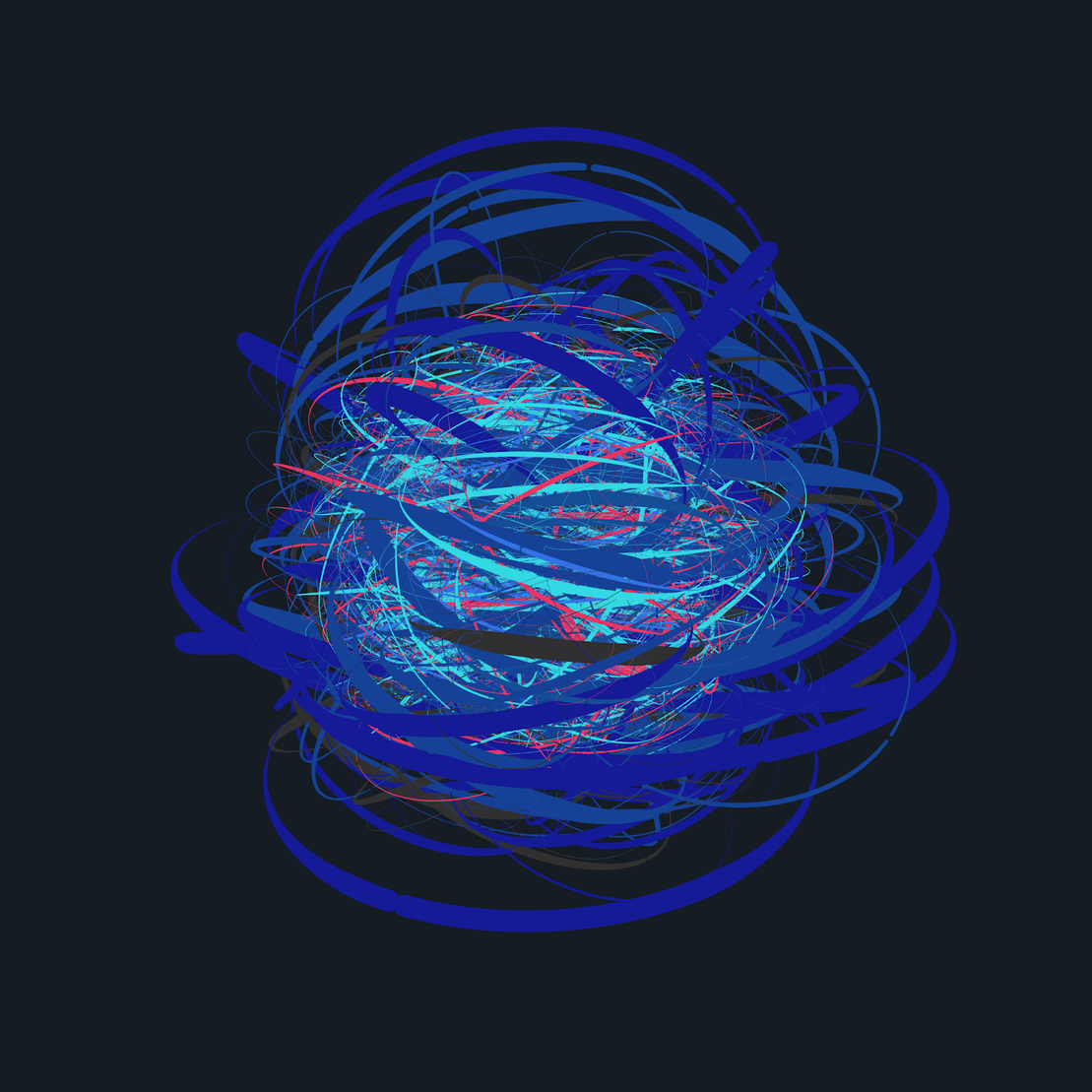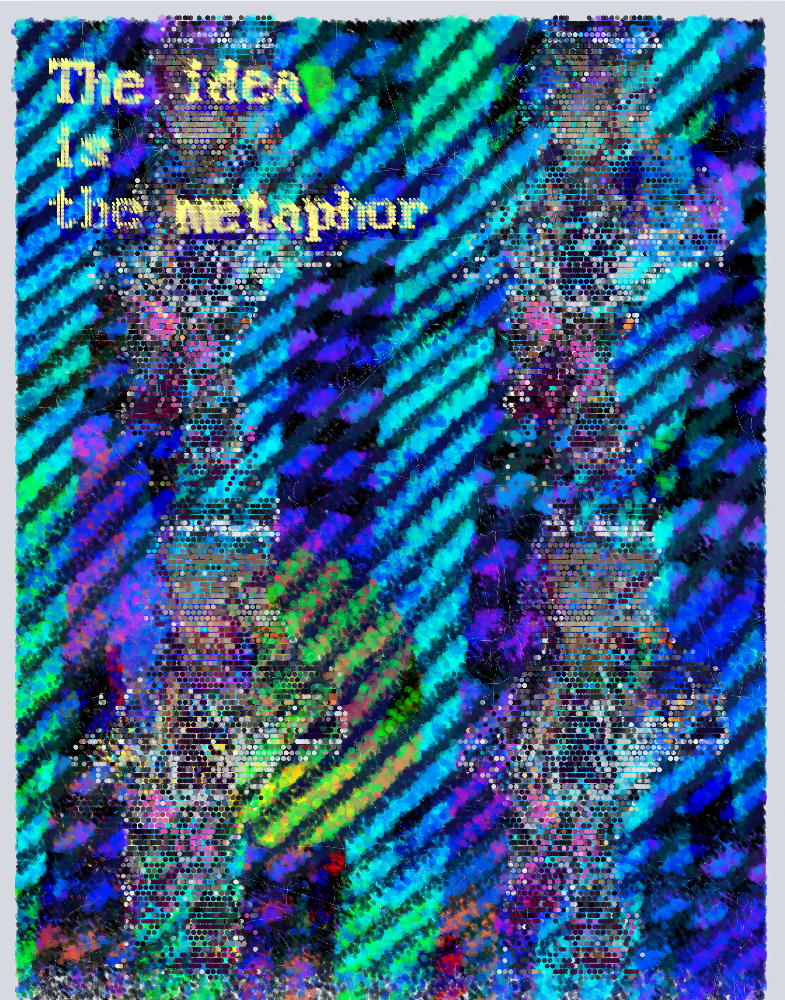
Painting Impressionism with Code: A Conversation with Nudoru
written by fx(press)
For our audience who isn’t already familiar with you, can you give us a little background about yourself? How did you come to generative art?
I’ve been using computers as a creative tool since I first touched one in the early ‘90s. We had a family computer, and I taught myself how to use it and to code with books from my middle school library. I’ve always loved to draw, and these skills helped me use code to create art for the little games that I’d make for fun. This interest in digital art propelled me into a graphic design program in college. I followed my own path, blending art, design, and computers to explore many types of art and interactivity from 3D, typography, multimedia, and then the web. Following college, I worked as a front-end developer and designer.
In the late ‘90s, I remember finding Joshua Davis’ Praystation site and trying to create similar generative works with Flash. I came back to generative art over the years before deciding to pursue it seriously in early ‘21. I spent most of the year learning how to work with HTML canvas and various algorithms before finally starting to release work on fxhash that December.
What motivates you to continue exploring generative art? How often are you surprised by your code and its creative possibilities? Is there anything you feel is entirely unique to your approach to generative art?
Curiosity keeps me going. I love designing an algorithm and pushing it in different directions to see where it’ll go. What happens if I change this? What does this parameter do? Seeing what’s been happening in my head is the most satisfying aspect of it.
One of the more unique aspects of my work is how I strive to incorporate painterly techniques. I’ve spent most of the year watching painting tutorials and creating systems that can mimic the look of paint. Beyond texture and stroke quality, I think color and how you approach mixing it, using specific colors for lights and shadows, help to make a cohesive image that works better on an artistic level. My strongest source of inspiration is the impressionists and how they were able to interpret light and feelings into art.
One of the more unique aspects of my work is how I strive to incorporate painterly techniques. I’ve spent most of the year watching painting tutorials and creating systems that can mimic the look of paint. - Nudoru
Can you elaborate on the concept behind your fxhash 2.0 release, Break Free?
Break Free is about escaping from barriers and limits. The sweeping arcs and bold strokes contrast with the regular pattern of lines and circles, as they spin outward, breaking the borders that seek to confine them. These themes apply broadly to many challenges in the modern world, such as creativity, freedom of expression, gender, and sexual orientation. I believe that everyone should try to escape systems that seek to confine or define how they’re allowed to be.
I believe that everyone should try to escape systems that seek to confine or define how they’re allowed to be. - Nudoru
The piece started a year ago as an exploration of particles moving in 3D space. I’d intended it to be a released project early in the year, but inspiration struck on another project, and Lake Festival happened. I returned to it in June, exploring how to represent the paths and adding some painterly strokes that I’d worked on for Lake Festival and Arboretum. Over the fall, I kept developing my brush algorithms and focusing intently on it in late October and into
Can you talk us through some aspects of the technical and creative processes used for this work?
My approach is too chaotic to be characterized as a process! Earlier in my career, I would sketch out designs and create formal wireframes and mockups, but as my roles evolved, I switched to mocking up in code. This is the approach that I’ve taken with my generative art as well. I do a little sketching, but when I’m deeply focusing on creating the work, it just exists in my head until I can type it out.
I collect any interesting art or design I run across on Twitter, Instagram - anywhere. Having a collection of inspiring work is a huge help whenever I find myself stuck and need a gentle nudge. This is something that I’ve been doing for years, and I strongly recommend it to everyone.
Having a collection of inspiring work is a huge help whenever I find myself stuck and need a gentle nudge. - Nudoru
When working on my brush stroke algorithms, I look at reference photos of brush strokes, but reference can only take you so far. When building “Lake Festival,” I needed to take this further, so I borrowed my daughter’s paints to practice making marks - noticing how the strokes curved, what kinds of pressures were at what points in the strokes, and how the bristles behaved. This helped me better define and tweak what I was doing to achieve a new level of realism with the strokes.
What are your thoughts on the current trend of using generative art as a tool to recreate painting-like textures?
On the current hot drama around embracing the computer vs skeuomorphism, artists should do whatever they want to do. No one should be gatekeeping or telling anyone else what’s generative art, what’s good, and what’s not. Artists need to support each other and not add to the negativity already out in the world. Sometime in the future, historians will sort all of this out, and until then - make the art that you love.
In my own practice, I love generative art that fights against the perfection of digital and works to add imperfections, texture, and details from traditional media. I enjoy this in my own work and am delighted that I can create art that I don’t have the skills to just paint with a brush. Being able to start with digital and then add in a little wabi-sabi is wonderful.

How do you see your practice evolving in the context of generative art and NFTs? What future do you envision for yourself as a generative artist?
After a very busy ‘22, this year has been slow-paced and deliberate. Looking ahead, I want to find a balance between those two approaches: continue to focus on a small number of collections, taking the time to explore the algorithmic space, but push a little harder to release double what I did this year. I would love to participate in more events, have my work shown in exhibitions, and do some traveling to events.
As for what direction my work will take - I can’t answer this one! Since I tend to follow my curiosity and do what interests me, this can change from day to day. I’ve stopped making longer-term plans because I always end up changing them.
Where do you see this medium going in the next 5, 10, or 20 years? Is institutional acceptance important to you?
I have been fortunate to display my work in a few physical spaces and would love to see more people exposed to generative art this way. My hope is that digital work, in general, becomes more broadly represented in galleries and seen by the masses as art. I think lowering the costs of technologies such as screens and low-powered computers will help people display them in their homes and public spaces.
Do you collect generative art from other artists as well? What do you like, or what types of work appeal to you most?
Over the past year, I’ve withdrawn a bit from the space’s social aspects and collecting. I still collect work here and there but don’t have a strategy. My rubric tends to be: do I love the work, can I easily understand how it was created, and do I respect and want to support the artist. I don’t look at it from a flipping or monetary perspective since I intend to hold on to it for as long as I can.
I enjoy all kinds of art, but mostly representational. There are amazing artists creating landscapes with code. Since it’s my favorite theme, I’m drawn to these. I also like artists who use code to remix their illustrations, work involving typography, and minimal geometric compositions.
How much do you think about the chain your artwork is minted on? Does it matter to you now, and do you think this will be more or less important in the future as blockchains evolve?
When I started producing generative art, I chose Tezos because of the low cost and how it enabled people at different levels to participate without needing to put in very much money. I stayed for the culture and community. There are so many talented and wonderful people that it’s a no-brainer.
I’d always wanted to branch out to Ethereum and grow my audience with a different group of collectors. That was also the reason behind my release with Verse on Eth and Genify on Lambda – getting my work in front of new collectors and expanding my reach.
I think that fxhash and Verse’s approaches to multi-chain support are the best way for platforms to support artists and collectors’ preferred chains. Going into the next cycle, I believe that fewer platforms with multi-chain support is a better approach than new platforms based on lesser established chains. It creates fragmentation, and artists releasing there are at risk of isolation. In the coming year, I’ll focus on Tezos and Ethereum, since this is where most artists and collectors are. The most important thing to me is for collectors to have access to my work.
---
Matt Perkins (aka Nudoru) is a pixel painter, digital designer, and generative artist based in Charlotte, North Carolina. His works have been exhibited at Verse’s Cromwell Place Gallery in London, The Silos in Shenzen, The NFT Museum of Newberry, and Birkdale Village in Charlotte. Find a selection of his works on fxhash and Deca.
Break Free by Nudoru, releasing on December 18.